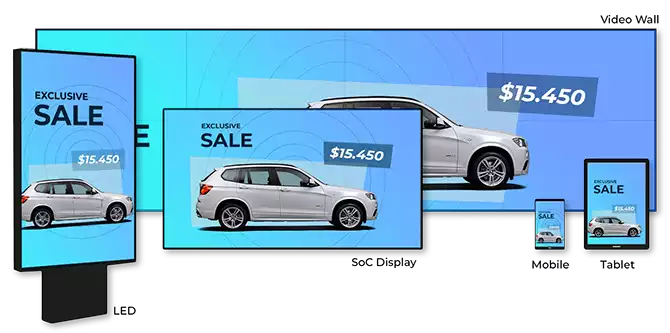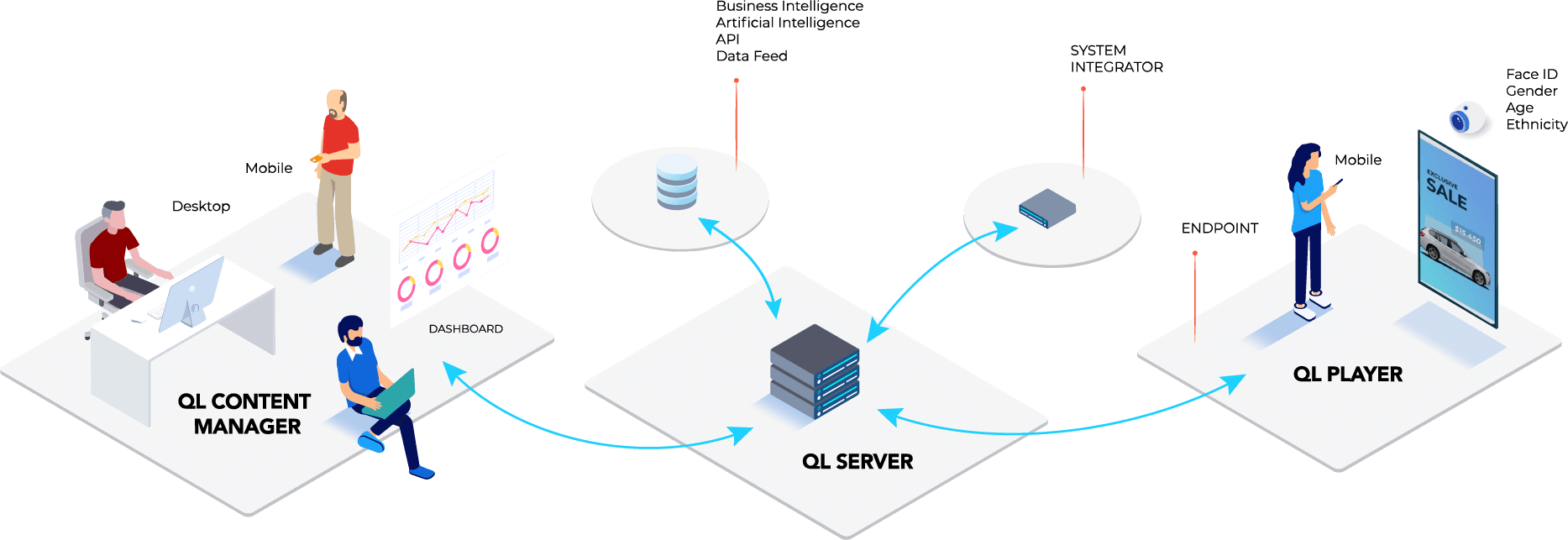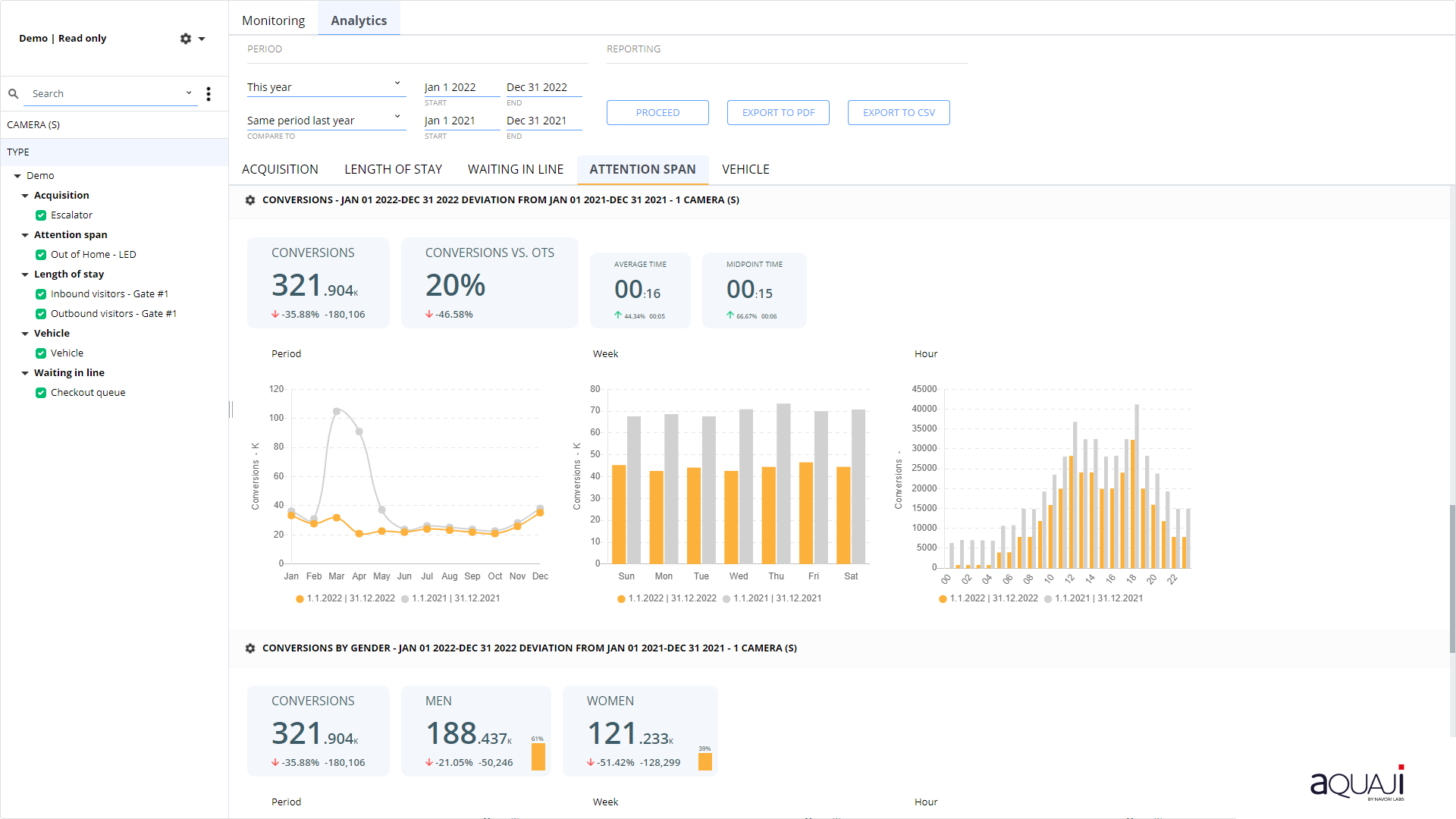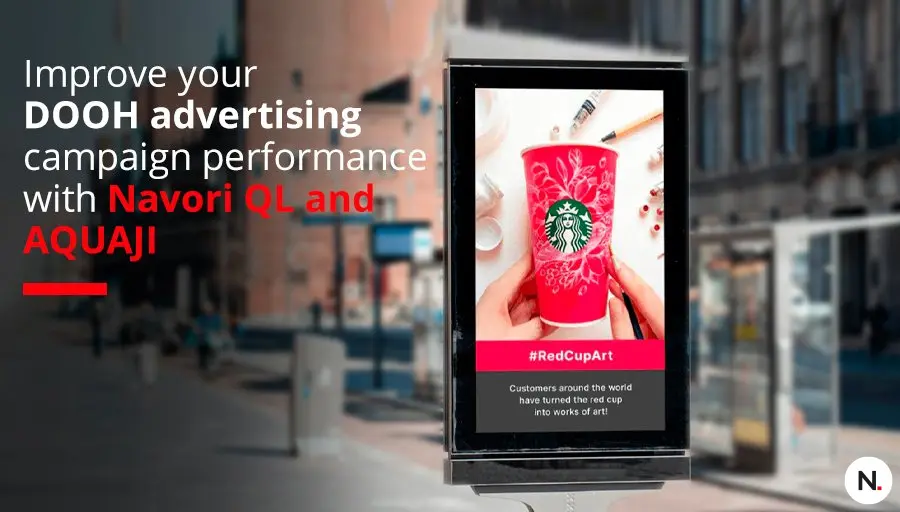Use Out-of-home screens and Monetize your Business
Digital signage systems have been used for decades to convey information or marketing messages that draw the eye and engage potential customers. Monetizing your screen network is a powerful way to raise brand awareness while driving foot traffic and building sales. This is where DOOH comes into play.
What is Digital-out-of Home or DOOH?
You can make money with your existing digital signage network by creating your own “DOOH” (Digital Out-of-Home) advertising platform. Digital out-of-home advertising is an emerging trend that can generate significant revenue for your business. It represents a unique opportunity to reach consumers on the go, with powerful messaging that resonates with the intended audience.
Do you have a media network, whether digital signage or digital billboards? Or have you acquired one from another company? Taking the time to understand and leverage digital out-of-home advertising will help you generate more revenue and monetize your screen network

But first, a bit of history…
Back in the day, the term “out-of-home” referred to billboards, posters, and other types of printed advertising. Out-of-home ads reach consumers as they are out running errands or visiting public spaces.
You may be surprised to know out-of-home advertising predates radio and television. In fact, it’s the oldest known form of advertising. OOH evolved into DOOH as digital signage screens became more commonplace. The name makes sense because content is now created, distributed, and shown digitally.
The DOOH advertising market is growing exponentially, and the trend shows no sign of slowing down.
The advantages of DOOH advertising
Emerging new technologies are helping reshape the advertising industry. While many agencies still rely on print, radio, and TV for advertising revenue, most are now embracing DOOH advertising to monetize their screen networks.
It’s important to recognize DOOH’s many advantages:
- On the web, people can use ad blockers to bypass Google Ads and other advertising techniques. DOOH ads can’t be blocked so your message always gets seen.
- Printed posters and banner ads are expensive to fabricate, store, transport and install. There are also issues with disposal costs and the impact on the environment.
- TV, Radio and Newspaper advertising is on the decline with most ad dollars now funding web and DOOH campaigns. Digital advertising still reigns supreme!
Who can benefit from DOOH advertising?
Here are some examples of businesses and locations that can benefit from DOOH:
- Bars and restaurants
- Car dealerships
- Commercial office spaces
- Elevators
- Hotels
- Outdoor billboard and building sign owners
- Public transit (airports/bus shelters/train stations)
- Shopping malls
- Supermarkets
- Basically, any screen network that has access to a sufficiently large audience.
Adding DOOH advertising to your digital signage content makes a lot of sense.
It will generate revenue that you can use to:
- Offset your digital signage operating costs.
- Expand or upgrade your digital signage system.
- Increase your ROI.
DOOH is a great way to leverage your existing digital signage network. It lets you make use of the empty space, and potential advertising space that exists within your digital signage system’s programming.
DOOH advertising is incredibly effective, because it targets people when they leave their homes to go shopping.
What does DOOH advertising require?
Running DOOH campaigns requires a network of digital signage screens and access to an ad inventory. This can be a combination of videos and images which are essentially repurposed TV and print ads.
Revenue is based on the number of ad impressions that your screens generate. Note that an impression is recorded every time an ad is shown on screen. Advertising firms use the CPM model, or cost per thousand impressions to calculate advertising fees.
It’s ad buyers and advertisers who pay monthly fees to screen ads on your screens. To support this activity, your digital signage software should let you insert ads into your regular programming using an automated process. This is so you can generate your client’s target number of impressions.
While it’s possible to manage small DOOH campaigns manually, automation is essential to managing larger campaigns.

What is programmatic DOOH?
Programmatic DOOH (DOOH) helps ad buyers identify their target audiences and select when they want to show their content.
For example, a summer leisure product may only be relevant to certain audiences during a pacific time of the year. Sometimes a product becomes more interesting when certain environmental conditions are met. Think of an ice cream cone that becomes irresistible on particularly hot days.
The system figures out when and where ads should be shown for maximum impact. It makes its calculations based on the data it has been fed.
Programmatic DOOH uses real-time external data to insert ads into your playlists without any manual intervention. It is a popular way to monetize your screen network.
Computer Vision
Cameras mounted above digital signage screens detect viewers and feed the captured information to an AI system for processing. Computer Vision solutions use this data to confirm when someone has seen an ad. The software also collects useful demographic data that can be used for programmatic DOOH.
For example, different ads can be triggered based on the viewer’s gender, age, or other demographic makeup. Computer Vision solutions help qualify the advertising data while ensuring ads are shown to the target audience.
The result is accurate proof-of-play data and very high-quality metrics. Ad placement can be automated when you feed this data into a programmatic advertising system. This data is invaluable when looking for ways to further monetize your screen network.

Using DOOH marketplaces to monetize your screen network
DOOH marketplaces connect ad buyers with digital signage networks so they can purchase ad space to screen their content. Ad buyers have several options when booking ad spaces. They can choose Private Marketplaces (PMPs), Open Exchanges or direct buy.
Open Exchanges function like Google AdWords where you are bidding for impressions, and you have limited options to choose from. For example, you can pick between different types of venues but not a specific location or screen network.
Private Marketplaces also use the bidding process, but the ad buyer has more control. They can negotiate subsets of available digital signage inventories down to a list of screens and negotiate prices.
In a direct buy scenario, the ad buyer deals directly with the digital signage network owner or broker. The ad buyer can choose each screen and location via a series of directories. Inventories are guaranteed and there is no bidding.
Directories provide all the necessary information about any available digital signage network:
- The number of screens.
- Screen dimensions.
- Screen aspect ratio.
- Physical location.
- Exposure (also called “Opportunity to See” or OTS).
This represents the number of daily viewers.
About Navori Labs
Navori Labs digital signage software includes features that automate the ad programming process. Ad buyers can create their own advertising playlists that merge ads with regular screen programming. Users select target impressions and the number of ads to play in sequence. The software automatically inserts the ads to meet the required number of impressions based on proprietary algorithms.
An available API lets developers interface Navori with third-party software solutions to automate ad bookings and reporting. The company’s AQUAJI marketing analytics software uses computer vision and artificial intelligence to feed programmatic DOOH systems. AQUAJI ensures every ad is shown to the right audience and records each interaction for high-quality reports.

